Trying to figure out what the best heart rate monitor for running is can feel overwhelming. I’d say it depends on your goals, but right now the data shows that some versions are superior in accuracy. Let’s look at the best choices from watches to chest straps and more.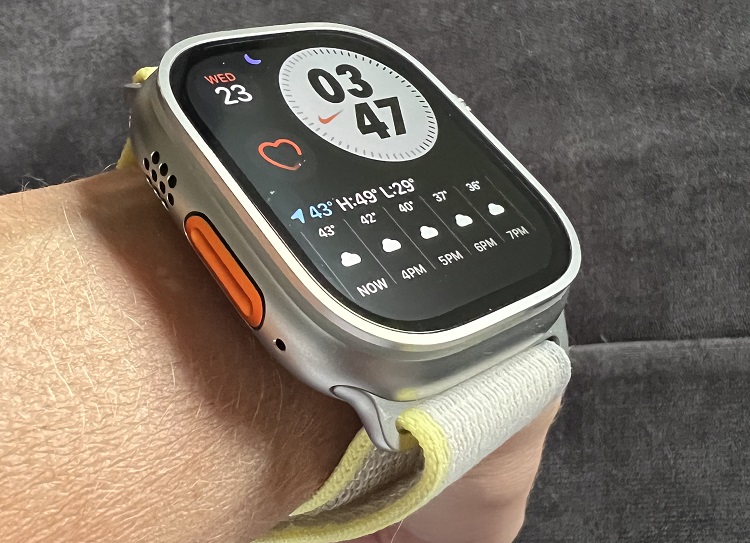
They’re also incredibly important gadgets that can help athletes and fitness enthusiasts such as runners and cyclists when training. For instance, when a runner is preparing for a race because they can help you improve your performance or change your goals.
So, if you’re training by heart rate with zones or doing low heart rate training, and you need the data to be 100% then this post is going to save you some heartache.
Regardless of which training method you’re incorporating you’ll find that it’s important to have accurate data when needed.
This article will focus on my personal recommendations based on decades of running experience and gear testing. I’ll give you options in the various categories of heart rate monitors that are available in the market.
How Do Heart Rate Monitors Work?
Electrocardiography is how most chest strap trackers measure the electrical activity of the heart. On the other hand, most armband and watch-style heart rate monitors use photoplethysmography. This uses small LED lights to measure blood flow through the skin.
You can see your heart rate in real-time with either method since the data is transmitted to a receiver, like a watch or an app.
What Options Are Available for Heart Rate Monitors?
You’ve probably heard of a few common options already, such as chest straps, armbands, multi-use fitness trackers such as the Apple Watch series etc. but you’ll be surprised to know just how many different types are available in the market today!
In this article we’ll take a look at what the options are, some of which might surprise you like earbuds!
And then talk about what plays in to accuracy and if your style of training could make certain tools better than others.
✅ The Polar H9 is a great option.
It pairs with Polar Watches, Garmin, Peloton, apps and more, while being accurate and cost effective. Having tested it, I can vouch for this!
In the end, sometimes you may have to decide between ease of use and top of the line accuracy.
How Accurate are Wrist Heart Rate Monitors?
The two most common heart rate monitors include chest straps and optical heart rate sensors (usually on the wrist, but not always as you’ll see!!).
Optical monitors use sensors that detect the blood pulsing through your veins.
While more comfortable to wear, especially during a workout, they’re often not as accurate as chest straps. Particularly in cold weather running when your body is trying to pull blood towards the core and thus pulse might not be as strong.
- The blood flow in your wrist is further from the source: your heart.
- Further, poor reading can result if you flex your wrist or move your arm or travel down a bumpy road.
- Wrist-based monitors are more convenient and can be worn all day long without discomfort, but can show bpm discrepancies up to 6 beats.
- Some people notice a spike in the first mile of running. Doing a good warm up has eliminated that for me!
- Cadence Lock is a new thing I learned recently which explains why suddenly during your run the watch is showing 165-180 and you’re still going easy! It’s showing your cadence for a few seconds.
👉Having tested a TON of running watches. Many of you know that I have found Polar Vantage V2 to be extremely accurate over many miles of running. Recently, I’ve also been quite impressed with the Garmin Enduro.
However, these are higher end watches and much more expensive than the options below.
10 Best Heart Rate Monitors for Running
There are five main categories that I’ll be going through in this article to give you a range of options to choose from. I’ll include my personal suggestions from experience as well as what you can expect from them in terms of performance.
If you need some guidance on what to do with the heart rate data, checkout this Guide to Running Heart Rate Zones.
So, let’s get started!
1. Heart Rate Chest Straps for Running
Chest straps are widely used by runners, including elite athletes. They work similar to an electrocardiogram (EKG) by reading the electrical signals your body sends with each beat of your heart.
They require a receiver like your GPS running watch to display the information. And you’ll need to ensure the one you buy works with your watch or the running App on your smartphone, as they have different technologies.
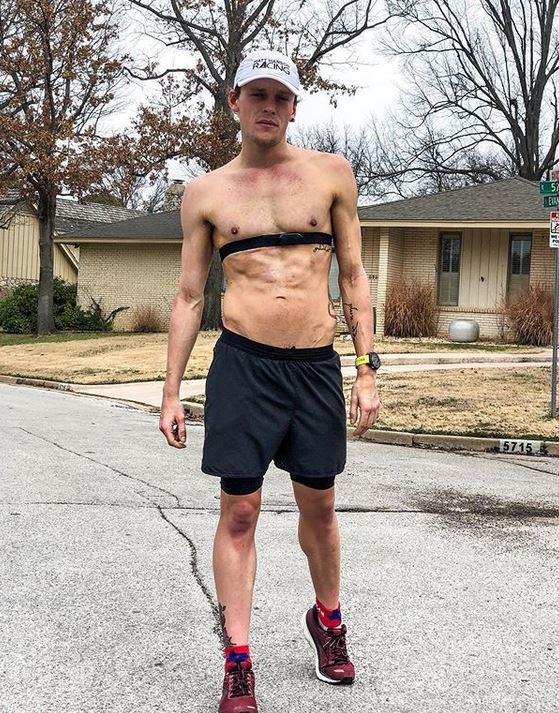
Cleveland Clinic researchers asked 50 healthy adults to wear various heart rate monitors, including an EKG while walking or running on a treadmill. When measured against the EKG, the chest strap heart monitor showed the most accurate readings.
As mentioned above, they tend to provide more accurate than wrist-based technology, however still come with a few cons:
- They can feel uncomfortable
- Can loosen during exercise
- Cause chafing
- Tough to adjust mid-run, resulting in inaccurate readings
If money is a concern, chest straps are more economical than wrist-based optical monitors. Especially if paired with a free running app like MapMyRun!
My main issue with chest straps, is they always chafe me! And I always got spikes at the start of my runs, so remember they are not perfect and you need to know your body and your max heart rate.
For example, if I see mine reading 160 during mile 1 I know that it’s the watch because I’m still warming up and breathing easy.
Which leads me back to my standard response of see what works for you because clearly majorly awesome athletes like Noel love ’em!
Option 1: Best Chest Strap for Running: Polar
When it comes to chest straps, Polar makes some of the best in the market! I have personally used the Polar H10 and it’s an incredible monitor. But I think the cheaper Polar H9 does the work just as well, so I often recommend it.
But if you want the newest and greatest, you can’t beat the Polar H10 as the overall best chest strap heart rate monitor on the market for runners.
It comes with enough built-in memory to store data from a single workout that you can then transfer to the compatible app, i.e., Polar Beat. It is also compatible with many other top fitness apps, so you have a wide variety to choose from.
If having two simultaneous Bluetooth connections is a priority for you, then pick the H10 over the H9. The other difference is that the H10 comes with in-built memory while the H9 does not. There’s also a slight difference between the straps for both of them.
See the Polar H9 ($59.95) >>
See the Polar H10 ($89.99) >>
Option 2: Garmin Chest Strap
Some other popular options come from Garmin, such as the Garmin HRM-Pro and HRM-Run. From experience I’ve found that Garmin chest straps always work well, but I’ve had better luck with getting my Polar chest strap to pair faster and hit the correct readings from the start of the workout.
It also has the ability to track a wide range of metrics beyond heart rate, including running dynamics, ground contact time, and vertical oscillation.
Garmin also offers a long battery life, with up to 1 year of use on a single coin cell battery. Additionally, the HRM-Pro is compatible with a range of Garmin devices, including cycling computers and GPS watches, as well as device is equipped with both ANT+ and Bluetooth connectivity.
It’s going to make tracking your HR in real time easy. And as always they are designing specifically for us athletes.
See the Garmin HRM-Pro ($120) >>
See the Original Garmin Dual Strap ($70) >>
PSSSTTT A little birdie told me something totally new fun is coming here and I can’t wait to share it with you.
Option 3: Wahoo HR Monitor
An option that I haven’t personally used, but have heard my triathlete friends rave about is the Wahoo Tickr X. Largely because they use it with Zwift on the bike.
One of the standout features of the Wahoo Tickr is its ease of use. The device is incredibly simple to set up and use, with a straightforward design that makes it easy to wear during even the most intense workouts. The Tickr connects to your smartphone or other device via Bluetooth, allowing you to track your heart rate in real-time and view your workout data in the accompanying app.
Comfort is also a key consideration when it comes to heart rate monitors, and the Wahoo Tickr delivers in this regard as well. The device features a soft, adjustable strap that is designed to be worn around the chest, providing a snug and comfortable fit that won’t interfere with your workout. I’ve heard this from many a runner friend.
Other key features of the Wahoo Tickr include its ability to connect with a wide range of fitness apps and devices, including Apple Watch, Fitbit, and Garmin.
It also offers ANT+ compatibility, allowing you to connect with a range of cycling computers and other devices. Additionally, the Tickr features a long battery life, with up to 500 hours of use on a single charge, making it an ideal choice for those who want to track their heart rate throughout their fitness journey.
See the Wahoo Tickr Fit ($80) >>
See the Original Wahoo Ticker for a lower price ($50) >>
2. Activity Tracker or Smartwatch
There are so many activity trackers out on the market now, it’s a little overwhelming…and my question to you is do you need a tracker or do you need a great GPS running watch?
Activity trackers are great for determining resting heart rate, but not as precise during exercise. Which is why I don’t have a top pick here, but instead things to guide your choice.
These popular devices are great for recreational use and for helping users track steps and and gather estimated metrics on heart rate, but are not necessarily as reliable for accurate heart rate recordings.
They do record a lot of helpful data aside from your heart rate:
- counting steps
- calories burned
- calculating elevation gained
- tracking hours of sleep
If you already have an Apple Watch and now want to really understand the differences between that a GPS watch, I highly recommend you read my article on Garmin vs Apple Watch where I break it down for you.
Or checkout Fitbit vs Polar, again to better understand how a running watch is different than a fitness tracker.
Speaking of sleeves…get a hold of the fun tip I shared, which had more people tell me I’m a genius than maybe any other thing I’ve done, which is mildly concerning. How to see your watch during winter runs…use the thumbhole!
Having tested so many running watches in the last 20 years, I can tell you there are two that I find to be pretty darn accurate with wrist based heart rate.
I’ve written detailed reviews on both options:
3.Polar Heart Rate Monitor Arm Band
There are other brands doing this (like Coros), but Polar seems to have the top spot from my research. This isn’t a chest strap or a wrist based tool, instead it’s an optical sensor that you can wear around your arm or on your head if swimming.
Why? Well mostly based on the above idea I noted about eliminating the chafing and knowing this will work for swimming, as well by having a swimming goggles strap clip option and being water resistant up to 30m.
I started testing this during winter runs and I was really impressed. It stayed put and easily paired with my Garmin.
You can wear it on your upper or lower arm – whatever you prefer more and whatever feels more comfortable to you.
A number of Run To The Finish athletes have moved to this option recently and LOVE it.
It has a USB charging adapter with a long battery life. They provide an adapter that implies you plug it in to your computer to charge, but I actually put it in the plug for my iPhone cord and that was way more convenient.
It has a built-in memory for up to 200 hours of training. You can then sync your workouts quite easily to Polar Flow via the Polar Beat app. It’s also compatible with other popular fitness apps on both iOS and Android, such as Strava and Nike.
See the Polar OH1+ ($59) >>
4. Best Heart Rate Monitoring Headphones
Sport headphones now use optical heart rate trackers, which is great if you listen to music while you run because you can get an update on your HR too. They work using optical technology that senses your pulse with an LED.
Jabra Elite Sport is one of the best I’ve seen for this. They do a great job with fit and technology, plus they’re waterproof!
It has a pretty good battery life that delivery 4.5 hours of play time and comes with a portable charging case that gives you 13.5 hours of power to keep going.
You can track the heart rate data with the Jabra Sport Life app that integrates with these earbuds.
Obviously the downside is you’re still relying on an optical sensor and you probably aren’t going to wear them all day or for sleep, if you want continuous tracking.
In fact, some of you might remember when I tested out the Oakley Radar Pace. Not only does it tell you HR, but provides sunglasses and coaching.
Think a chest strap or watch are your only options for measuring HR on the run, checkout these tools! Click To Tweet5.“Smart” Hats for Heart Rate monitoring
Relatively new to the heart rate monitoring scene, LifeBEAM “smart” hats use Bluetooth and ANT+ signals to record bpm and transmit the data to your phone or watch.
I actually learned about this during my trip to Israel, as it was developed there! They have some seriously amazing technology happening and I can vouch for it being a pretty normal fit hat, you won’t look at it an know anything is different.
Electro-optical sensors measure your heart rate, calorie burn, and running cadence. With a battery life of 20 hours.
The hat looks like a regular running hat, so if you wear one during runs anyway, it could be a cool addition that does a little bit more than just keep the sweat and sun off your face.
In terms of weather compatibility, you can use this weather it’s raining or the sun is shining outside – no problem whatsoever.
The technology can connect with your GPS watch, Strava, and just about any other device.
See Lifebeam hat ($65)>>
What to Look for in a Heart Rate Monitor
Accuracy
You need a device that is accurate and consistently reliable if you’re monitoring your heart rate to ensure that you’re training within a certain range.
Most of the time, chest straps that use electrocardiography are the most reliable. The electrode pad on the chest strap gathers up electrical signals given off with each heartbeat, allowing for continuous heart-rate monitoring.
Optical heart rate monitors, which include bracelet and armband devices, track your pulse using tiny LED lights. It’s possible to get accurate readings with this method, but it requires a snug fit, and you can wind up with some readings that are way off some time to time.
**Honestly, this is the piece I’m always testing when doing gear reviews. I mentioned above there is only a short list of GPS watches that remain accurate mile after mile. Chest straps however will go the distance! I’ve had my H9 for like 10 years.
Comfort
Even the most comfortable chest straps can become restrictive and cause chafing during really long runs. Armbands and wristbands are typically more suitable for extended training sessions, particularly when the weather is warm.
Connectivity
Monitoring your progress, refining your workouts, and providing important information to a coach or healthcare professional are all possible thanks to the data provided by your heart rate monitor.
Look for a model that can have its data downloaded to a computer or synced to an app if you want to see your stats over time.
Some heart rate monitors use ANT+ technology, which is a wireless system used with workout machines like the Peloton. There are also options that use Bluetooth to connect to your phone wirelessly, which can make the gadget more convenient to use for some people.
Ease of Use and Compatibility
If a device is too complex to use, you will be unable to reap all of its benefits and features. Make sure the device fits your needs and works with the exercise equipment you’re using and the technology at some gyms.
How to Read Heart Rate Monitor Results
People who want to get the most out of their workouts use a heart rate monitor to make sure they stay in their target heart rate training zones.
Some basic monitors simply display your heart rate so it’s up to you to figure out your desired zone depending on your age and fitness level. Some of the more advanced devices will alert you with a notification when you reach your goal zone as well as when you fall below or go above it.
If you’re looking to calculate your target heart rate zones, check out my Guide to Running Heart Rate Zones.
Make sure you read part 1: Understanding how to train with heart rate!
Reading part 1 will give you a good foundation to understand heart rate data and explain to you the 5 heart rate zones that lie between your resting and max heart rates. This will enable you to gauge the level of intensity of your training on any given day.
If like me, maybe you’ve been doing Low Heart Rate training a long time and are really in tune with your body, you tend to know roughly how hard you’re working. And it’s ok with you to have days (i.e. in the cold) where the watch monitor isn’t spot on, but is possibly more convenient, well-read on as well!
Hopefully this breakdown of heart rate monitors for running, gave you some ideas to figure out what’s going to be most comfortable for you and help you track your training!
There’s so much to know about HR training, but if you’re concerned about running with a high heart rate a good monitor is key.
Looking for heart rate training?
A few common requests:
- How Low is Too Low for Resting Heart Rate?
- What’s the Average Heart Rate While Running?
- Why do I get Dizzy After Working Out?
- Understanding Zone 2 HR Training
- When to Use Zone 4 HR Training
All right there you have it, a variety of options for measuring your HR while running! More gear you want to know about? Let me know.
Other ways to connect with Amanda
Instagram Daily Fun: RunToTheFinish
Facebook Community Chatter: RunToTheFinish
Get more running tips: Pinterest
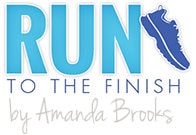
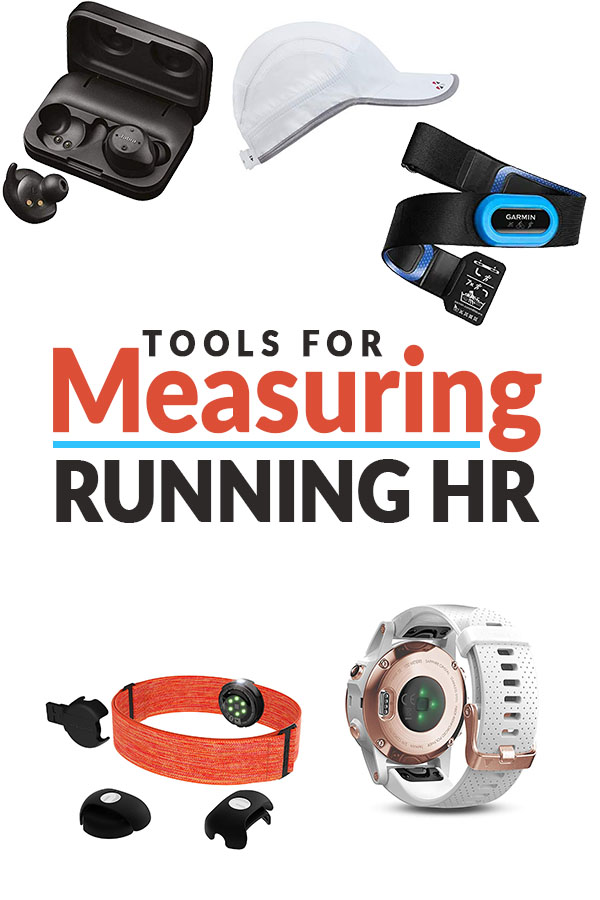
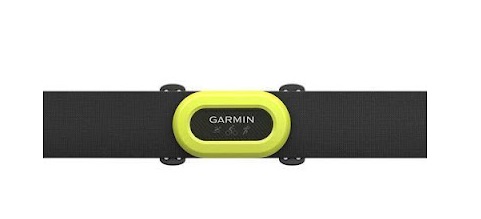
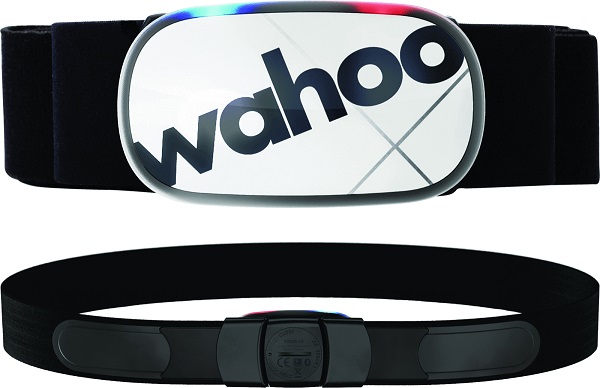
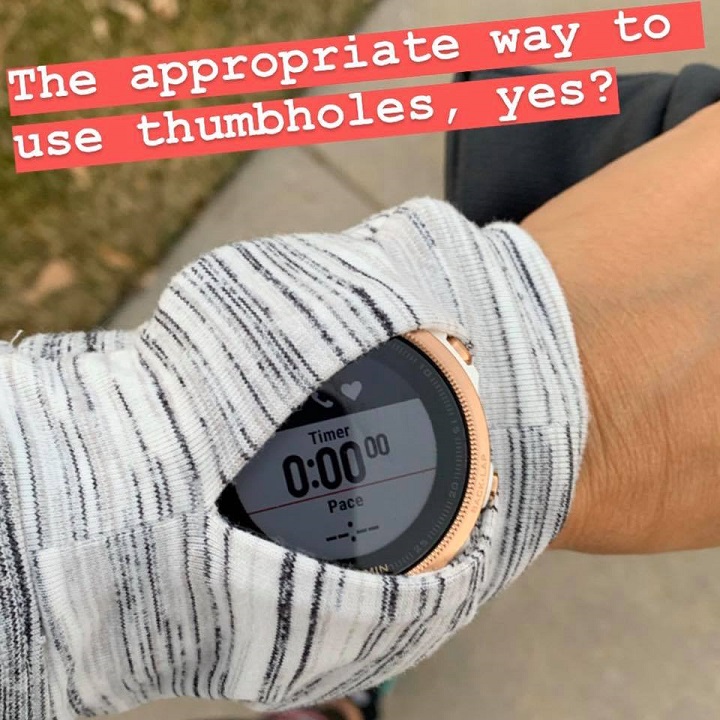
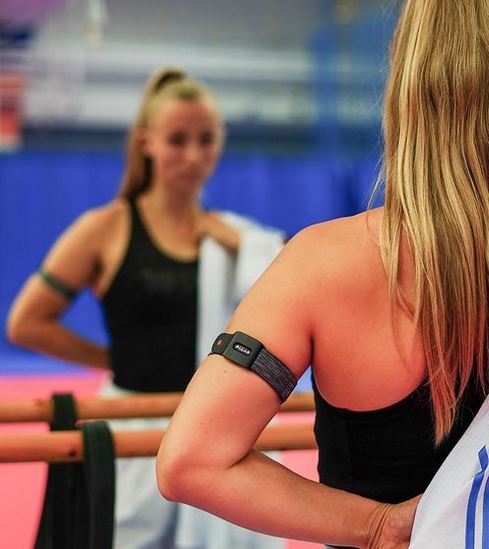
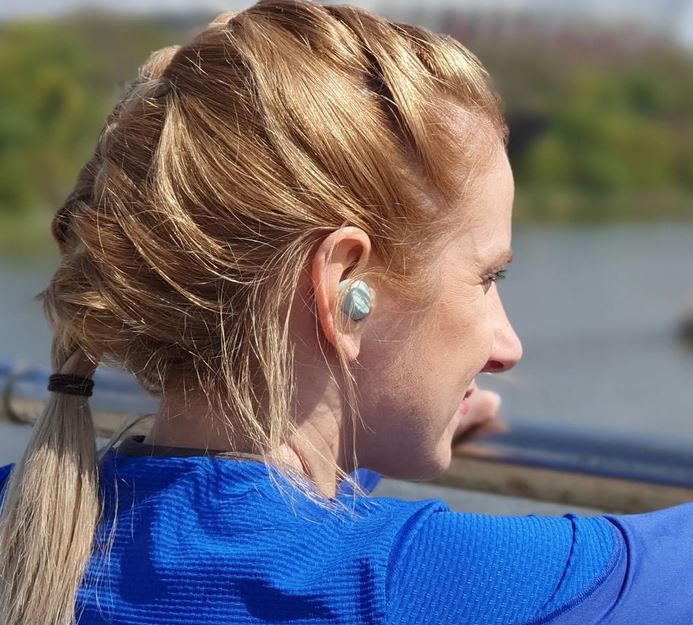
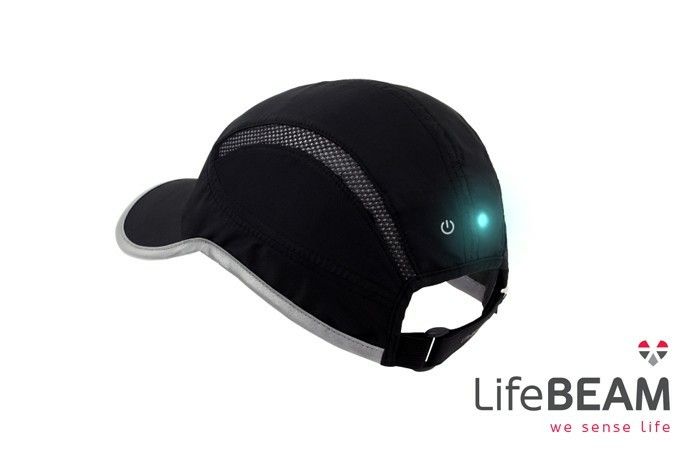

 Confidently Running Alone: Tips for Running Safety
Confidently Running Alone: Tips for Running Safety
